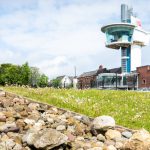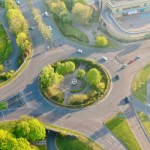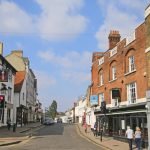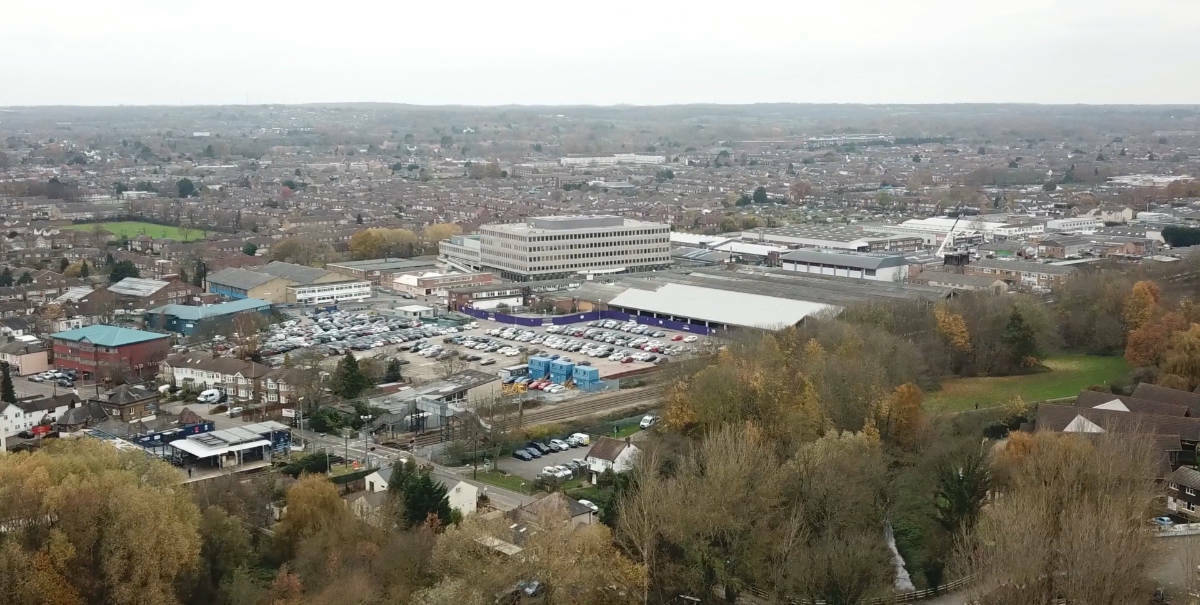
Cheshunt, the historic town on the River Lea.
Cheshunt is a borough in the Greater London Urban and the Metropolitan areas. It’s only 12 miles from London city centre, which makes it the ideal place for both work and play. Commuters live here and pay extortionate rates on rent, while businesses flock here to help drive those prices upwards bring new work.
Hi. We’re in a funny mood today. Let’s take advantage of it and tour some guides.
The Early Days of Cheshunt
The “Chesh” part of Cheshunt comes from the Latin -Ceastre. The Angles and Saxons later turned these words into Chester or caster. This is where towns like Winchester get their naming from. The word was the way we natives described a castle that the Romans had built.
Of course, a Roman connection makes complete sense here. We know the Romans built roads straight north, east, and west out of London. In areas where crossroads formed, population centres grew. Cheshunt, therefore, grew up on the main road north: Ermine Street. Thousands of years later and we are still using the Roman road system.
Excavations and historical records show there was a road line settlement in Cheshunt during the Roman era. Survey work carried out in the ’50s and 60’s revealed evidence of an important roadside settlement. It is likely the Romans would have stables here, perhaps even an inn and a few villas removed from the city centre. The settlement included Cheshunt Park Farm. In fact, the area was excavated more thoroughly on an episode of Time Team, the archaeological dig show. You could read the published research in detail here if you so choose.
So we know that the Romans built a road through here, but it’s probable that the area was at least semi-occupied before they arrived. The area belonged to the ferocious Iceni Tribe, who once fought of Queen Boadicea herself. London would not have gone quietly in that battle. The Romans were in southern Britain in the first few centuries but the true invasion came in 43 AD. Even back then, the area around London lay in contested territory.
It was the natural place for a settlement, given the locality of the Cantii, the Regenses, the Catuvellauni, the Carvetii and the Trinovantes. You can read more about the tribes and their heritage on the English Monarchs website.
The next time the town has a measurable point in history is just after the Norman Invasion. 20 years after he took England, William the Conqueror decided to conduct a survey of his lands. Isn’t it funny that 20 years is ‘just after’ in the grand scheme of history? We can look up any town in England in the online Open Domesday Book resource, so let’s see what was going on in Cheshunt.
By 1086, Cheshunt had a massive 78 households. The entire land belonged to a single owner, too, which is almost unheard of. Count Alan of Brittany inherited the land as a reward for loyal service to his invading king. Before that, the land belonged to Edeva the Fair. The list of property and wealth is quite impressive. You boy the Count owned:
- 23 ploughable fields
- 4 Lord’s plough teams and 2 more possible
- 17 working men’s plough teams
- 10,0 Lord’s Lands
- 23 ploughs in a meadow
- Woodland big enough to house 1200 pigs
- And a mill.
The guy was rich beyond any peasant’s wildest dreams.
The Medieval Era
The Middle Ages were a period of slow but stable growth for the town. William, I granted the land to the Count with all the wealth. The town had its first charter, that’s the rules that are drawn up to govern it formally, in 1146. The church of St Mary the Virgin was included in this but not in the Domesday Book reference. There would be a priest to tend the flock there. The church was rebuilt before 1448.
When she was a child, Queen Elizabeth lived in Cheshunt with Sir Anthony Denny as her ward. Elizabeth led a sheltered life but would frequently stay in Hertfordshire, waited on by her half-sister Mary. As the only child of Henry VIII, she was left fatherless in 1547. At the age of 20, she was arrested and sent to Hatfield on house arrest. Hatfield house still stands today and you can still visit. It has many of the same ancient woodlands that she would have loved as a young woman. It was here, in 1558, that she was informed of Mary’s death.
In the 1500s, the Andrews family built the nearby medieval courtyard style building known as the Cheshunt Great House. The house would pass into the hands of Cardinal Thomas Wolsey and then on to the Shaw family, who had the Georgian brick portion extended. The manor is a Grade II listed building and is still standing to this day. The Shaws refurbished much of the manor in the 1800s since it had fallen into dilapidation.
The town would later play host to the death of Richard Cromwell, Lord Protector of the Commonwealth, in 1712.
During the Medieval Period, Cheshunt Park was a massive deer park, and the presence of royalty and huge woodland suggests that this area was a busy hunting ground for the nobility.
Let’s take a moment between historical periods to reflect on some of the fun things we learned about this historically significant town along the way.
Fun Facts and Trivia About Cheshunt
During this stage of the tour, we like to take a moment and reflect on the best trivia we dug up. In the case of Cheshunt, there were some interesting tidbits you should know. Blend in with the locals with these fun facts:
- The Prime Meridian falls just outside the east of town. This is a geographical mapping device, as far as we can make out. But it’s something to do with longitudes set to 0 degrees? It sounds a bit Bermuda Trianglish to us. Don’t go walking your dog in the east of town alone at night, just in case.
- Cheshunt Great House was used by the Freemasons in the late 1800s. It then went on to house troops during WWII. It remained open to the public until it was destroyed by fires in 1965.
- The Cheshunt Railway ran from the River Lea right up to the High Street. It was a horse-drawn line that relied on the shire horses of old to tug it along the line. It was the first monorail system and passenger-carrying railway line in Britain. It existed from 1825, about 20 years prior to the arrival of the steam-powered railway line.
- London’s famous Temple Bar stood in Cheshunt until 2004 when it was returned to Paternoster Square.
- A near miss by an American pilot in the Second World War meant Cheshunt escaped a tragedy. We’ll cover this more in a second, but a crash landing from an American pilot could have been a lot worse if it weren’t for the bravery of, him and his crew.
- There is a nationally famous golden post box in Cheshunt. The post office replaced the traditional mailbox red colour in honour of Olympic Gold Medallist Laura Kenny, who carried the Olympic torch through the town before the London 2012 games.
- Cliff Richard once stayed in the town next door.
And on that happy note, let’s return to the good old days and blast through the past so we can get to the best bit… the attractions. A gold post box though, that would be spraypainted in ten minutes in rural Scotland.
Cheshunt in the Industrial Era
In 1642, local nobleman Robert Dewhurst founded the Dewhurst Alsmhouse Charity, which would feed and clothe the poor of Cheshunt throughout the Industrial period. The Free School opened that same year, giving an education to the boys of the town. Another charitable organisation, the Beaumont Trust, helped set up further almshouses. The trust was gifted compensation by King James I to expand Theobald’s Park.
The amount totalled £500, of which £180 went towards building almshouses at Turner’s Hill. The trust bought Curtis Farm but it didn’t end there. All through the Industrial era, the nobility of the area left gifts in their will to keep the trust funded. In 1670, Lady Jane Mico left £100, in 1610 Humphrey Flint gifted £2200, in 1638 the extremely wealthy Sarah Gwift left £900.
The trust was still running in the 1800s. In 1810 and 1814, wealthy ladies left gifts to maintain their tombs and help the poor. One gift was conditional that the clergy be paid 1d. every month. By 1910, the parish record shows that a part of Cheshunt Common was ‘owned’ by the cottagers there, who had the right of common. The land generated £150 per year over 100 acres. In 1890, the cottagers even opened their own hospital.
In 1899 the Charity Commissioner ordered that those attending the Free School be given lunches. Of this allocation, a strange £3 1s 8d was to go towards ‘prizes and book allocations to be distributed to the boys on the first Monday of February’. Yeah, we have no idea either. A local widow left money for a Sunday school to open. The Charity Commission extended this to include prizes too[i].
Let’s not forget that while all this charity was going on in the background, the Industrial period would be a massive change for Cheshunt. With all the wealth of the country coming and going through London, the town had no real need to be particularly industrialised itself. With the industry happening farther afield, the town could focus on education and alms, improving the lives of the inhabitants.
Sources say that living in pre-industrial and industrial Cheshunt wasn’t the healthiest. Although they experienced steady population growth, they are close to the smog of London. During the late 1700s, there were several outbreaks of plague in the area. The town would suffer again and again alongside the rest of Greater London, any time a new plague arrived from the sea.
20th Century Cheshunt
Moving into the 1900s and beyond, the almshouses and the local council would eventually make the changes that pulled people out of the gutters. Street lighting, electric trams, and piped water. A working sewer system and a train line, all of these arrived in Cheshunt in the latter part of the 19th century. Cheshunt arrived in the 1900s fully prepared to tackle the new century head-on.
Of course, like the rest of the country, they found themselves at war. There are 248 names of young men from Cheshunt in the Imperial War Museum’s roll of honour. During the Second World War, Cheshunt lost a further 120 souls that never returned home.
Remembering the Crew of The Liberator
During that same war, an American plane crashed into a nearby field in 1944. The plane was on course for the town, but the pilot managed to avert a tragedy by steering into an unpopulated area. Keep in mind that this was in the dark, during blackout times.
The Liberator was a B-24 bomber that had a suspected mid-air collision. It was filled with explosive material and was headed for the heart of town. The pilot and crew, knowing they would die in the explosion, managed to divert the plane out of town. There were 10 crew, 7 of them were younger than 23. The plane was part of a group set to attack the south of France but they ran into the weather. The plane had a reported 23 tonnes of explosives on board.
A 15-year-old fire-fighter named Ernie Havis was first on the scene and helped to pull some of the dead men from the wreckage. Stricken by their bravery, he applied for funding to build a memorial a few years later. It stands in the park, near the new school. You can hear Ernie’s story on Herts Memories. The street that ran near the crash was renamed Lieutenant Ellis Way after the pilot.
Just to be clear, the young men on the plane could have bailed out but didn’t.
Modern Cheshunt
Modern Cheshunt contains Cedars Park, which houses the war memorial. It is the site of the former Theobald’s Palace and happens to be where they kept the Temple Bar. Situated during Lea Valley Park, the town is surrounded by greenery, a far cry from the streets of London not far away. Cheshunt almost joined Enfield in the 1950s but the plans fell through.
The town is quiet yet ideally located. If you want a cheaper place to stay while you travel in and out of the cities nearby, then this is idyllic and special. Cheshunt has plenty of its own history and access to some of the best museums and nightlife in the country, only 12 miles to the south.
Famous People from Cheshunt
At this point in the article, we always take a breather from history to reflect on the best things to see and do in town. However, we can’t get to that until we know who we may meet in the supermarket. Nobody wants to be caught in their pj’s and hair rollers in front of someone famous. Here are the famous people we know of that originated in Cheshunt:
- As we mentioned, Cliff Richard stayed here for a while.
- Laura Kenny is a Cheshunt resident, hence the golden post box.
- The man that founded Bebo – remember Bebo? His name is Michael Birch.
- Glamour model of renown Linda Lusardi is a long term resident here.
- Ryan Mason, who managed Tottenham Hotspurs after they kicked Jose Mourinho off the team, studied here.
So many famous people, so little time to collect them all. Their signatures, we mean. You can’t fit a human in a poke ball.
And now it’s on to the good stuff!
The Top Attractions in Cheshunt
This is the section where we analyse the best places to go in town, as foretold by the locals and tourists that came before us. Behold! The best things to see and do in Cheshunt.
Historic Sights and Landmarks
Part historic site and landmark, part outdoor attraction, Cedars Park has plenty to see and do. Walk around the ruins, go to the animal area, or climb hills or trees. There’s even a maze. Cedars Park is where Theobalds Palace is, so they have something for everyone. There’s even a café for the famished. It opened in 1919.
If you like walking and you are in an adventurous mood, you can choose to follow the Churchgate History Trail through town. You can find a detailed retelling of how to do that, here.
Galleries and Museums
The only real museum that contains specific information on the area is the Lowewood Museum. This interesting place will fill you in on all the gaps in knowledge we missed out. It contains artefacts from days gone by, but it does cover the greater Broxbourne borough.
The nearest art gallery is in Enfield, one town to the southwest. The Arthouse Gallery has some fantastic prints and original artworks from local artists.
Outdoor Attractions
Cheshunt Park is a five-minute walk from the town centre. It’s a Green Flag award park with lots to see and do. There is a football and basketball court area, the skate park is inside it, there’s a playground, a pond, some woods, and even a café/restaurant. the historians amongst you will enjoy a walk around Centennial Corner which has amongst other things a replica of a WWI tank.
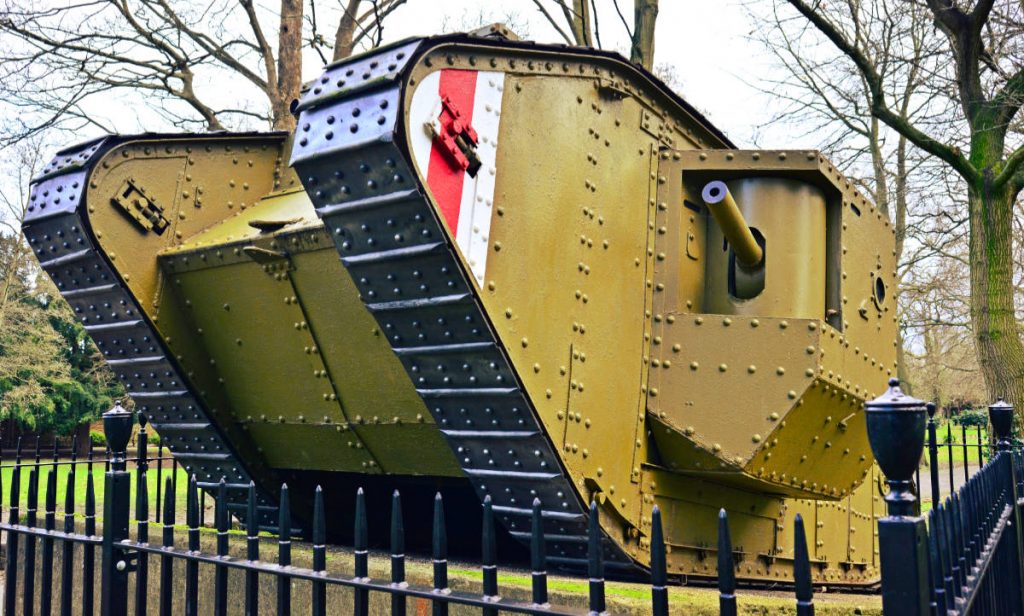
Image: Yannis Vythoulkas/Shutterstock.com
Inside the 1000 acre River Lea Country Park – a fantastic nature reserve outside of town – you can find the Herts Young Mariners Base. They use the river for open water swimming, boating, and other mariner-y things. The Lee Valley is at your fingertips when you stay in Cheshunt, so why not go canoeing, have a hike or explore.
Sports and Recreation
Cheshunt Football Club is in the Isthmian League Premier Division. They were founded in 1946 and go by the nickname the Ambers. They play at the stadium/park in Theobalds Lane. The original club they replaced formed in 1880 but played in black and white.
There is a golf centre in Cheshunt Park. You can also play at the Cheshunt golf club, established in 1976. It is a private members club but you might get a day pass. They play on the course inside the park.
Shopping, Food and Nightlife
There are two main shopping centres in town. Try the Brookfield Shopping Park or the Brookfield Farm, both in the same area near the river.
As to food, there are many choices. El Curioso is a lovely Tapas bar in the area that lets you try all different small plates of food. There’s a Mai Thai Kitchen for those that love eastern cuisine, and lots of fast food, too.
There are options for nightlife without having to go south to London. The Illusion Wine and Gin lounge is a good starting point. Move on to Bar 56 or the Crocodile. If you want a pint, it’s the Old English Gentleman for you.
Other Notable Attractions in Cheshunt
If the attractions above didn’t wet your whistle, then there are still a few exciting enticements out and about in the surrounding areas. Check out the following if you are planning a staycation in Cheshunt this summer:
- Take your kids to the local Jump City trampoline park
- Visit the indoor/outdoor play centre at Fun Junction
- Go do some karaoke at the Crocodile
- Or laugh your socks off at Cheshunt Comedy Club.
There’s something to entertain everyone in the family in this neat commuter town.
How to get to Cheshunt?
We are almost caught up with all the vital Cheshunt information you need. Here are some worse-than-average directions so please use your sat nav.
By Road
Head north out of London on the A1, or take the M25 to the A10
By Rail
Cheshunt Train Station is on the Greater Anglia line.
By Air
The nearest airport is London City Airport
By Sea
Alas, you are landlocked but technically you could transverse the Thames and then the Lea if you are really determined to get here by boat.
Got Five More Minutes?
Do you still have a couple of minutes of reading time to spare? Head to our other travel guides and browse away. Nearby places to Cheshunt include St Albans, Borehamwood, and Welwyn Garden City… and we have covered them all. You can follow us on Facebook if you would prefer. Until next time: drive safe, and don’t follow our directions.
[i] https://www.british-history.ac.uk/vch/herts/vol3/pp441-458


